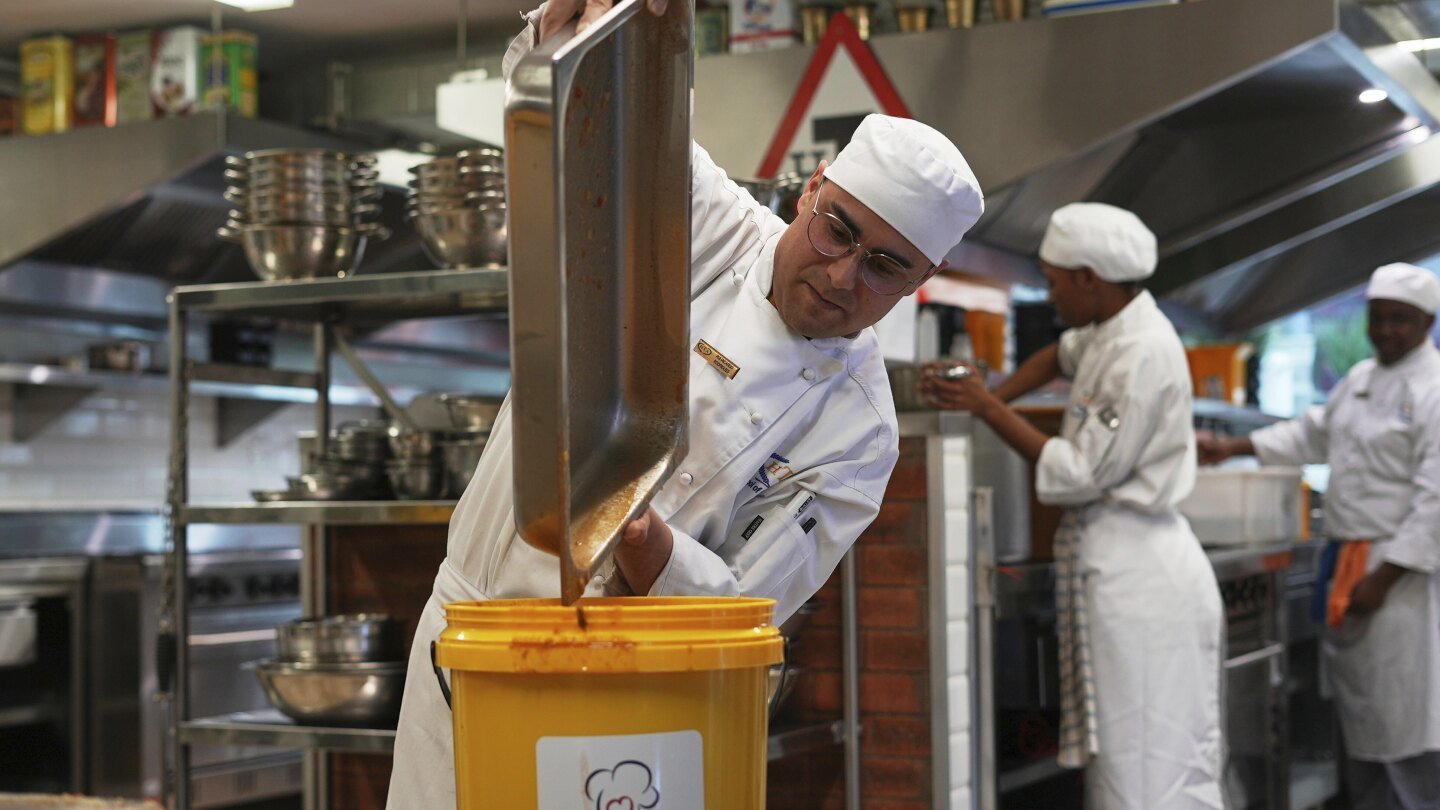Lifestyle
South African cooks aim to stir up 67,000 liters of soup to fight hunger on Mandela Day

JOHANNESBURG (AP) — Dozens of South African chefs, community cooks, caterers, and culinary students joined forces Friday in Johannesburg to make 67,000 liters (17,700 gallons) of soup to feed the hungry, in celebration of Nelson Mandela Day.
First officially recognized by the United Nations in 2009, International Nelson Mandela Day encourages people to commemorate the birthday and legacy of South Africa’s first Black president by volunteering for 67 minutes, which is equivalent to his 67 years of public service.
To mark the birthday of South Africa’s former head of state, who was born in 1918, cooks all over the country made soup in their own kitchens to contribute toward reaching the target.
At the Johannesburg-based HTA School of Culinary Arts, cooks chopped vegetables, added legumes and sprinkled in a kaleidoscope of seasonings to make hearty soups. They braised their broths from early morning until 5:30 p.m., when the final soup tally began.
“The 67,000 liters, it’s our take on 67 minutes,” said executive chef and chairman of NGO Chefs with Compassion, James Khoza. “I did a lentil soup with vegetables and a bit of chicken pieces inside. It’s not your normal kind of soup where you boil everything, then you make the soup out of it. For me, I look at flavor and is it quality as well.
“I know the guys are on the streets sometimes, or the beneficiaries, people tend to just give them whatever they feel like giving, but …. guys like us who come from hotel business, we understand that what we must feed people must be of that level, highest quality, that they feel like they are worthy because indeed they are worthy, ” he added.
Every year, South Africans volunteer their time on July 18, cleaning up public spaces, helping at schools or hospitals, or performing humanitarian work and making donations.
For Chefs with Compassion, a non-profit organization that works to combat hunger and food waste, the food drive is “a war against throwing away food and wasteful cooking,” Khoza says.
This year marks the sixth consecutive year that they’ve rescued excess food from farmers and shops that would otherwise have been thrown out. Instead, the chefs use it to make large quantities of soup to offer to the thousands of Johannesburg residents who are food insecure.
As part of her school’s effort to add 300 liters of soup to the 67,000 liters that the collective aims for, Tyra Nyakudya, an 18-year-old college student, spent most of the day cutting vegetables and monitoring the soup pots.
Although she was only six years old when the statesman passed away in 2013, she said his legacy of compassion and service remain in the memory because “he did everything in his power to give back to the community, which is why we’re doing this today.”
South Africa is among Africa’s leading food producers, but the 2024 National Food and Nutrition Security Survey (NFNSS) report found that 63.5% of South African households were food insecure, which translates to over 20 million people going without food every day and about 10.3 million tons of food being wasted annually.
This is primarily driven by poverty, unemployment, and rising food prices, which are exacerbated by factors such as climate change and inequality.
Hanneke Van Linge, head of Nosh Food Rescue, said the figures illustrated that food waste and food surplus is a huge problem, which should concern citizens every day.
“There’s a lot of beautiful energy around Mandela Day specifically,” she said. “But we would like to implore people, don’t just let your involvement stay on Mandela Day.”
